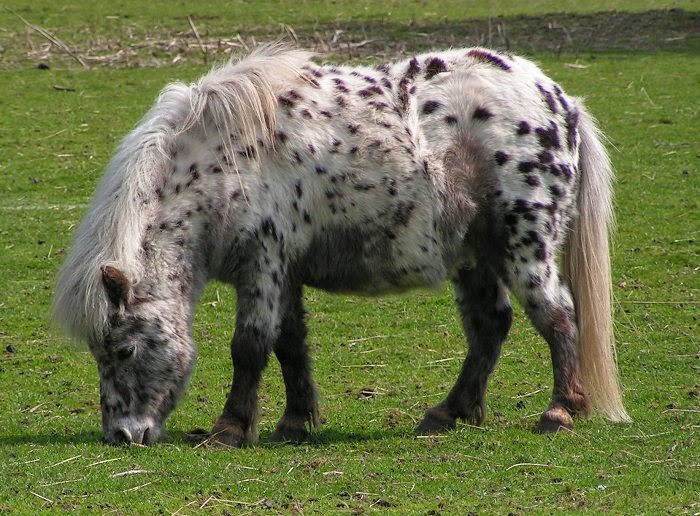Yesterday, I talked about how to tell if a horse was underweight or overweight.
Now I'm going to talk about fat horses.
(Image source: sannse via Wikimedia Commons).
Here's our obese Shetland again. Poor little guy.
It's as unhealthy for a horse to be fat as it is for a person - but the implications are different. Herbivores do not get heart disease (Horses can have heart attacks, but they don't get clogged arteries) or diabetes - although horses can become insulin resistant, it doesn't produce the same symptoms as it does in, say, humans or dogs.
An obese horse is, by definition, unfit. They are unable to put in a day's work, run fast, etc. I have also noticed that obese horses can become somewhat depressed - "fat and miserable." Horses that appear to be lazy when overweight can perk up a lot once the extra lard has been removed.
The most significant problems however, are insulin resistance, thyroid problems, and laminitis. Insulin resistance is like diabetes, but less severe. Overweight horses can also become hypothyroid - a vicious cycle as the thyroid problems slow the metabolism further.
Laminitis or "founder" is the most common and significant disease of obesity in horses.
This graphic, from Wikimedia Commons, shows a normal horse hoof - specifically an unshod hoof. The grey pointed bone is called the "coffin" bone and supports the hoof. The red line around it is the laminae. The laminae is the soft tissue that attaches the hoof to the bone. Laminitis is any inflammation of the laminae (it can also be caused by excessive work on hard surfaces).
This is a section of the hoof of a horse with severe laminitis. The word "founder" means to sink, and you can see here that the coffin bone has "sunk" downwards, distorting the shape of the hoof. The condition is extremely painful. In some cases, the coffin bone may even emerge through the hoof. It generally affects both front feet - laminitis in the hind feet is unusual).
The treatment for laminitis is painkillers, nursing care and, above all, a strict diet to get the horse's weight back to normal. Many horses do make a full recovery, but extreme founder such as that shown often results in permanent lameness and many horses with this level of laminitis are euthanized because they will never be able to even walk again. Once a horse has had laminitis once, they are extremely prone to getting it again - most survivors have to be on strict diets for the rest of their lives.
So...somebody put that Shetland on a diet now? Please?



No comments:
Post a Comment